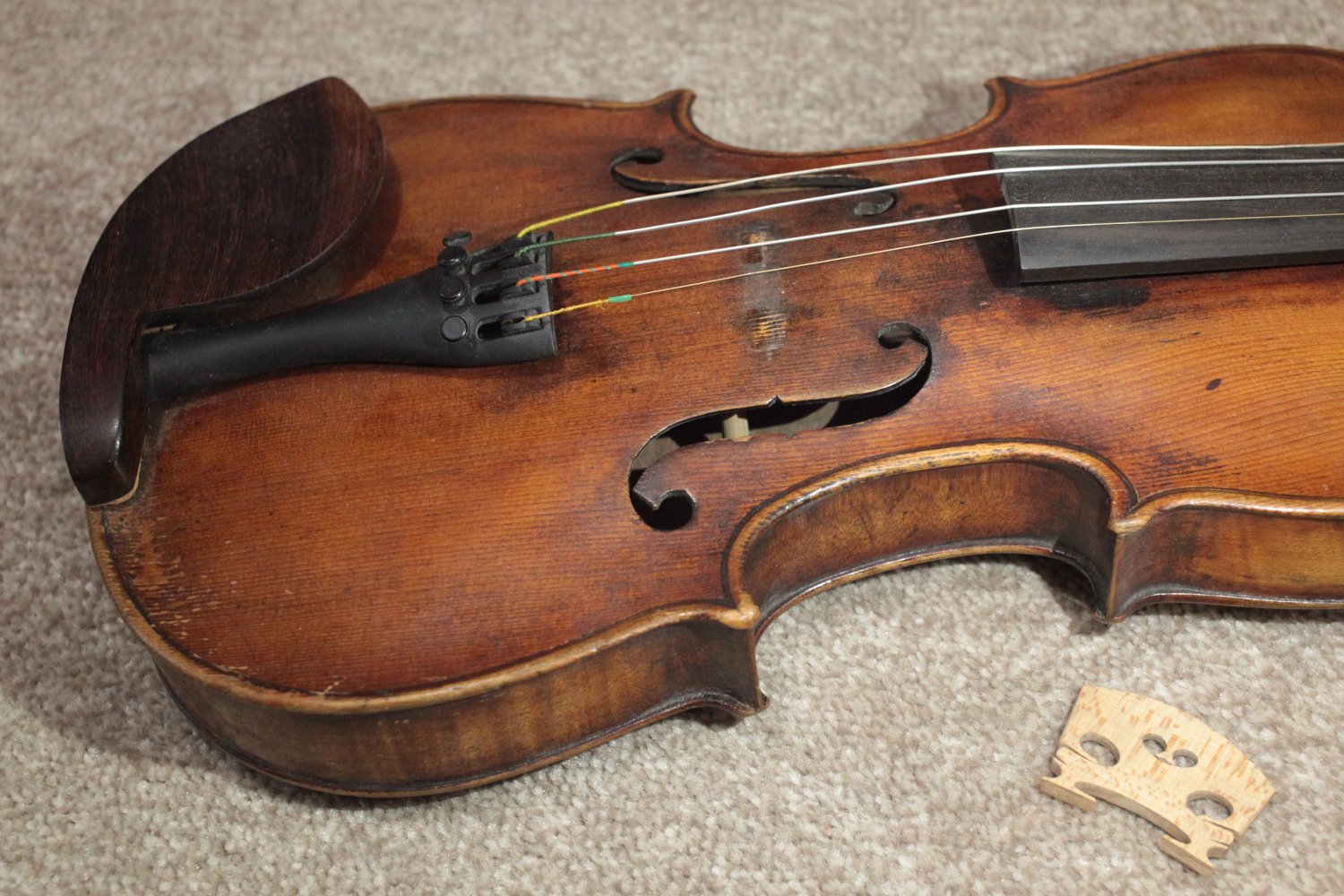Learn Violin Online with Online Violin Teacher Meghan Faw Lesson 1/15: Violin Set Up and Parts
We are so lucky to live in a day and age where tons of great information is available, for free, on the internet. However, great information alone is not going to help you truly learn the violin. To learn an instrument, you need to follow a step-by-step plan that builds upon itself. You need to focus on learning skills and practicing those skills through specific exercises and pieces, which is exactly what you’ll get in Learn Violin Online. To show you exactly how much progress you can make with a clear plan to follow, I’ve created this 15-part free Learn Violin Online beginner course. This is lesson 1: the parts of the violin and set up.
Parts of the Violin
Parts of the Bow
If your violin comes in the mail and looks something like the picture below, it needs to be set up before you can play it.
To set up the violin, locate the taller side of the bridge (the wooden figure in the bottom right of the picture above) and place that underneath the G string, which is the thickest string or the string on the left side when the violin is facing you.
Stand the bridge up, and place the feet of the bridge in line with the middle of the F holes. Once your bridge is standing, tighten all four strings by using the pegs.
When tightening the strings, you might find that your pegs either slip or get stuck. If your pegs are slipping (meaning you’re turning them but they won’t stay in place and just keep turning back), press the pegs into the violin after you turn them. You can also rub a bit of rosin on the inside of the peg to help it stick. If your pegs are sticking, (meaning that they are barely moving or aren’t moving at all) pull the pegs slightly out of the instrument and rub some peg compound on them to help them move smoother.
If you purchased a violin outfit, you might find other goodies in your case such as:
Rosin: Rosin is hardened tree sap that helps your bow stick to the strings. If your bow is not making a sound, apply a generous amount of rosin to the hair.
Mute: place this over the violin bridge to significantly lessen the sound of the instrument. These are particularly useful if you have finicky neighbors!
A cleaning cloth: This should be used to clean off the strings and the area underneath the strings after practice.
Extra strings: These are always good to have on hand.
Now you should be familiar with the parts of the violin and have your violin set up and ready to play.




